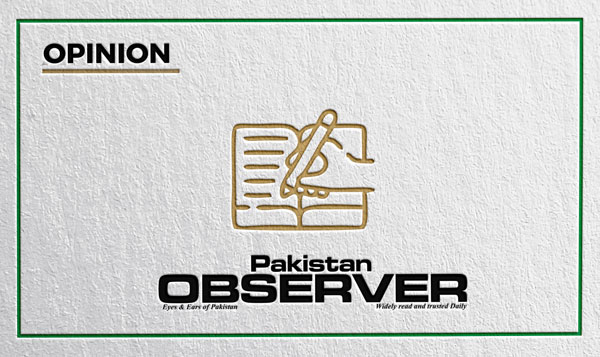Articles and letters may be edited for the purposes of clarity and space.
Pollution in perspective
Karachi ranked 3rd amongst the most polluted cities in the world, The city’s air quality index recorded a particulate matter reading of 190, a significant indicator of the extent of pollution in the atmosphere. According to health expert Karachi’s wind quality is very unhealthy, AQI as high as 151-200 is considered unhealthy, while an AQI reading between 201 to 300 is more harmful and AQI reading over 300 mark is extremely hazardous.
Experts say during winter air becomes heavier and causes poisonous particles in the atmosphere to move downward and pollute the atmosphere. The critical question at hand is, what is the solution to this escalating issue? The problem stems from the substantial use of both public and private transport in Karachi. The city’s inadequate infrastructure, coupled with the massive population, exacerbates the problem. Traffic jams lead to elevated emissions, contributing to environmental pollution.
I think Karachi is better than in the past now, but there are still some things on which we still have to work on, we must consider our lifestyle first. We must be cooperative towards our environment and should prioritize cleanliness, should take steps towards an eco-friendly environment for the safe breath and the betterment of the city.
AREEBA KANASRO
Larkana (Sindh)
Climate crisis
Climate change poses a severe health threat in Balochistan, impacting individuals constantly and spreading virtual diseases. It has become a paramount health challenging issue that causes numerous hardships to the citizens of Pakistan, particularly in Balochistan.
Unfortunately, the authorities have not adequately addressed this paramount matter seriously, resulting in increasing greenhouse effects and being the cause of globalisation, desertification and many others. Therefore, urgent intervention from the health department is important to protect lives and look into the matter as soon as possible.
DRUSHUM NOOR
Karachi
Subject specialists!
In the pursuit of a robust and effective education system, the role of teachers cannot be overstated. They serve as the guiding force, shaping the intellectual growth and academic prowess of the posterity. However, a growing concern has surfaced in recent times, particularly government schools in Sindh, where teachers are tasked with instructing multiple subjects outside their area of specialization. This practice not only compromises the quality of education but also undermines the very essence of subject expertise.
One glaring example of this issue is evident in the assignment of teachers holding degrees in specific subjects like Pakistan Studies, who find themselves juggling a myriad of subjects ranging from mathematics to chemistry and English. While the versatility of educators is commendable, there is a growing realization that such a wide spectrum of subjects cannot be adequately covered by a single individual without sacrificing depth and proficiency. The consequence of this compromised approach is felt acutely by the students. Imagine a scenario where a teacher primarily trained in Pakistan Studies is also responsible for teaching mathematics, physics, chemistry and the very subject they specialized in.
The result is a diluted educational experience where students may not receive the in-depth understanding and comprehensive knowledge needed for each subject. This not only hampers the academic growth of the students but also contributes to a lack of passion and interest in these subjects. To address this pressing issue, it is imperative for the government to re-evaluate its approach to teacher deployment. Instead of assigning educators to teach across a broad spectrum of subjects, the emphasis should be on hiring specialized teachers for each subject.
PEHLAJ KUMAR
Karoondi, Sindh
TikTok trend
I am writing to draw attention to a critical issue plaguing the vibrant landscape of Pakistan, a country where two-thirds of the population is under 30, the rise of social media platforms, particularly TikTok, presents both opportunities and challenges. With one in four Pakistanis engaging with TikTok, this platform has become a significant cultural force, especially among the youth. Intriguingly, 57% of Pakistani TikTok users are female, suggesting a notable shift in digital engagement among women in a traditionally patriarchal society. However, this trend also raises concerns about distractions from personal goals and aspirations.
The allure of TikTok is not confined to urban areas; it has also captivated the youth in rural regions. While the platform offers a space for creative expression and social connection, it also poses a risk of creating instability in the growth trajectory of young individuals. The phenomenon is particularly pronounced among young men in these areas, where educational and economic opportunities are often limited. The impact of TikTok on the youth of Pakistan is a complex issue.
On one hand, it empowers young voices and provides a platform for self-expression and community building. On the other, it risks diverting attention from educational and professional development, key drivers for a better future for Pakistan. This dichotomy underscores the need for a balanced approach to social media consumption. Educational initiatives and awareness campaigns can play a crucial role in helping the youth harness the positive aspects of platforms like TikTok while mitigating potential distractions. By fostering a culture of responsible use, Pakistan can ensure that its young population is not sidetracked from their goals, but rather, equipped to contribute constructively to the nation’s progress.
SURESH KUMAR
Sukkur
Box letter
Health crisis
Crimean-Congo Hemorrhagic Fever (CCHF) poses a new threat to Pakistan amidst ongoing challenges. Transmitted by ticks or contact with infected animals, it primarily affects those in the livestock industry. Symptoms range from febrile to a severe hemorrhagic syndrome, with a fatality rate of 40-60%. Recent reports from Quetta highlight the severity, with Dr. Shukra losing his life to CCHF and five doctors among the eight new cases. Additionally, an unknown pathogen outbreak in a government hospital’s intensive care unit in Balochistan adds to the health crisis, totalling 16 cases in the province. Prevention involves minimizing tick exposure through repellents and protective clothing. The situation demands urgent attention and coordinated efforts for effective control.
ROZINA DILMURAD
Turbat










